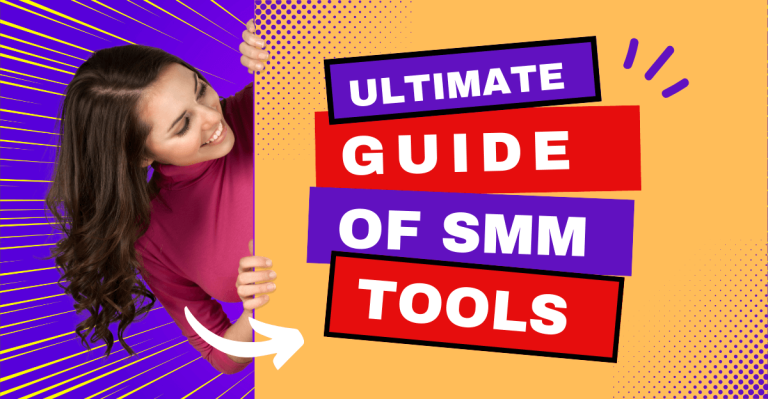How many newsletters to send to my subscribers
And how can I be sure I'm doing it right?
For all e-commerce stores, email marketing is an important tool to reach potential buyers and existing customers. The frequency of newsletter emails you send to your subscribers depends on several factors, such as your industry, your target audience and your marketing objectives. However, sending too many emails can result in subscribers feeling spammed and unsubscribing from your list, while sending too few emails can result in them forgetting your brand name. A general empirical rule is to send at least one email per month and no more than one or two per week. But, as you'll read in our conclusion, to send one newsletter a week means you need to send multiple email campaigns a week. Are we confusing you? Keep reading.
best practices to follow when sending newsletters
Create your email list organically: Building your email marketing list organically is important for the following reasons:
- Helps you avoid spam complaints and protects your sender's reputation
- You'll have a higher engagement rate from subscribers who voluntarily opt-in to receive your emails
- You can better target specific groups of people who are more likely to be interested in your products or services
- Leads to a more sustainable and loyal audience over time
If you don't build your email list organically, you risk damaging your reputation, reducing engagement rates and potentially losing subscribers. So you'll be paying to send newsletters to subscribers that, apart from all of the above, won't bring in any sales.
Personalise your emails: Personalising your emails to your subscribers can have a significant impact on the success of your email marketing campaigns. Here are some reasons why you should personalize your emails:
Increased loyalty: Personalized emails are more likely to grab your subscribers' attention and keep them engaged. Addressing them by name and tailor your content to their interests can make your emails feel more relevant and valuable to them.
Improved conversion rates: Personalised emails can help you build a stronger relationship with your subscribers, leading to increased trust and loyalty. This can ultimately lead to higher conversion rates, as your subscribers are more likely to take the desired action, such as making a purchase or subscribing to a service.
Better customer experience: Personalised emails show to your subscribers that you appreciate their individual preferences and needs. This can improve the overall customer experience and improve their perception of your brand.
Reduced risk of losing subscribers: Personalised emails can help you retain subscribers and reduce deletions. By sending relevant and valuable content to your subscribers, you can keep them engaged and interested in what your business has to offer.
If you don't personalise your emails, you risk sending generic and impersonal content that may not resonate with your subscribers. This can lead to lower engagement rates, lower conversion rates, and ultimately a lower ROI for your email marketing campaigns. So you can create a stronger connection with your subscribers, resulting in better numbers for your online store.
Use an attractive subject line: Using a compelling subject line is essential because it helps you stand out in a cluttered email inbox and entices your subscribers to open and engage with your emails. If you don't use an engaging subject line, your emails are more likely to be overlooked or considered irrelevant, resulting in lower engagement rates and potentially damaging your sender's reputation over time.
Keep it short and to the point: Keeping your emails to your subscribers short and concise is essential because it helps maintain their attention and loyalty. If you don't keep your emails concise, your subscribers may lose interest and stop reading your emails altogether. Long emails can also be difficult to read, resulting in lower open and click-to-view ratios, which can hurt the overall success of your email marketing campaign. Therefore, it is important to get to the point quickly and use attractive graphics, headings and buller points to break up your content and make it more digestible. Therefore, keeping your emails short and concise can improve engagement rates and help you achieve better results with your email marketing efforts.
Include a clear call to action: Including a clear call to action (CTA) in your emails to subscribers is essential because pushes them to take action, such as making a purchase, registering for a webinar or visiting the website. Without a clear CTA, your subscribers may not know what you want them to do and take no action whatsoever, resulting in lost opportunities for interaction and sales.
Test your emails: The test (A/B Testing) and analyzing your emails to your subscribers is essential because it helps you determine what works best for your audience, improve your email engagement rates, and achieve better results over time. If you don't test and analyze your emails, you risk sending emails that don't resonate with your subscribers, resulting in lower open rates, click-to-view ratios, and conversion rates. Analyzing the results of your email campaign, you can make data-driven decisions and optimise your future emails to better meet the needs and preferences of your audience. In short, testing and analyzing your emails is a critical component of a successful email marketing strategy, and neglecting it can lead to missed opportunities for loyalty and sales.
Things to avoid when sending newsletters
You flood your subscribers with too many emails: Flooding your subscribers with too many emails can lead to many negative consequences, such as:
Higher unsubscribe rates: When subscribers receive too many emails from you, they may feel you are spamming them and choose to unsubscribe from your email list, leading to a smaller audience for future campaigns.
Reduced loyalty: When subscribers receive too many emails, they may stop responding to your messages and stop engaging with your content altogether.
Damage to your brand reputation: Bombarding subscribers with too many emails can damage your brand reputation and result in people associating your brand with unwanted content.
Sending irrelevant content: Make sure your content is relevant to your subscribers' interests and preferences. Avoid sending generic content that does not appeal to your audience.
Using too many images or large attachments: This can lead to slow loading emails, which can frustrate your subscribers and lead to lower engagement rates.
Mobile optimisation overlook: Neglecting mobile optimization in your emails can be a major problem for your online store. Η majority of people now access their email from mobile devices and if your emails are not mobile-optimised, they may not display correctly, resulting in a poor user experience. This can lead to lower open rates, click-to-view ratios and conversions, as people are more likely to delete or ignore messages email that are difficult to read on their mobile devices. Therefore, optimising your emails for mobile devices is vital to the success of your email marketing campaigns. It ensures that your emails look good and are easily read across all devices, leading to better engagement rates and ultimately more sales for your online store.
So how many newsletter campaigns should I send out?
If only it were that simple. The frequency of emails is not the same for everyone. To get you started, you must have an email marketing strategy. As an email marketing expert, I highly recommend segmenting your email list based on subscriber interests to ensure your newsletters are relevant and engaging. This way, you can send out multiple newsletters each week without overwhelming your subscribers. For example, if you have a subscriber who is interested in different product categories, you can send separate newsletters covering their interests. This not only improves the chances of opening and reading your newsletters, but also increases the chances of your subscribers engaging with your brand and making a purchase. Sending out several newsletters a week is a great way to keep up to date with your subscribers and keep them loyal to your brand. Just make sure each newsletter is tailored to the specific interests of the subscriber segment to maximize its impact.
So, as you can see, the subscriber can receive one to two newsletters a week, but that means you have to send out a lot of email campaigns to achieve that.
Conclusion
By following these best practices and avoiding these common mistakes, you can communicate effectively with your subscribers and build a strong relationship with your audience. And the way to make sure you get it right is through the datan relating to the open and click rates of your newletter. So what you need to do is find benchmarks that relate to your industry and compare them to your own numbers.
If you find it difficult to do it yourself, ask us for a free consultation session 15-30 minutes, where we will analyse your numbers based on the industry you operate in and how you can improve them.






